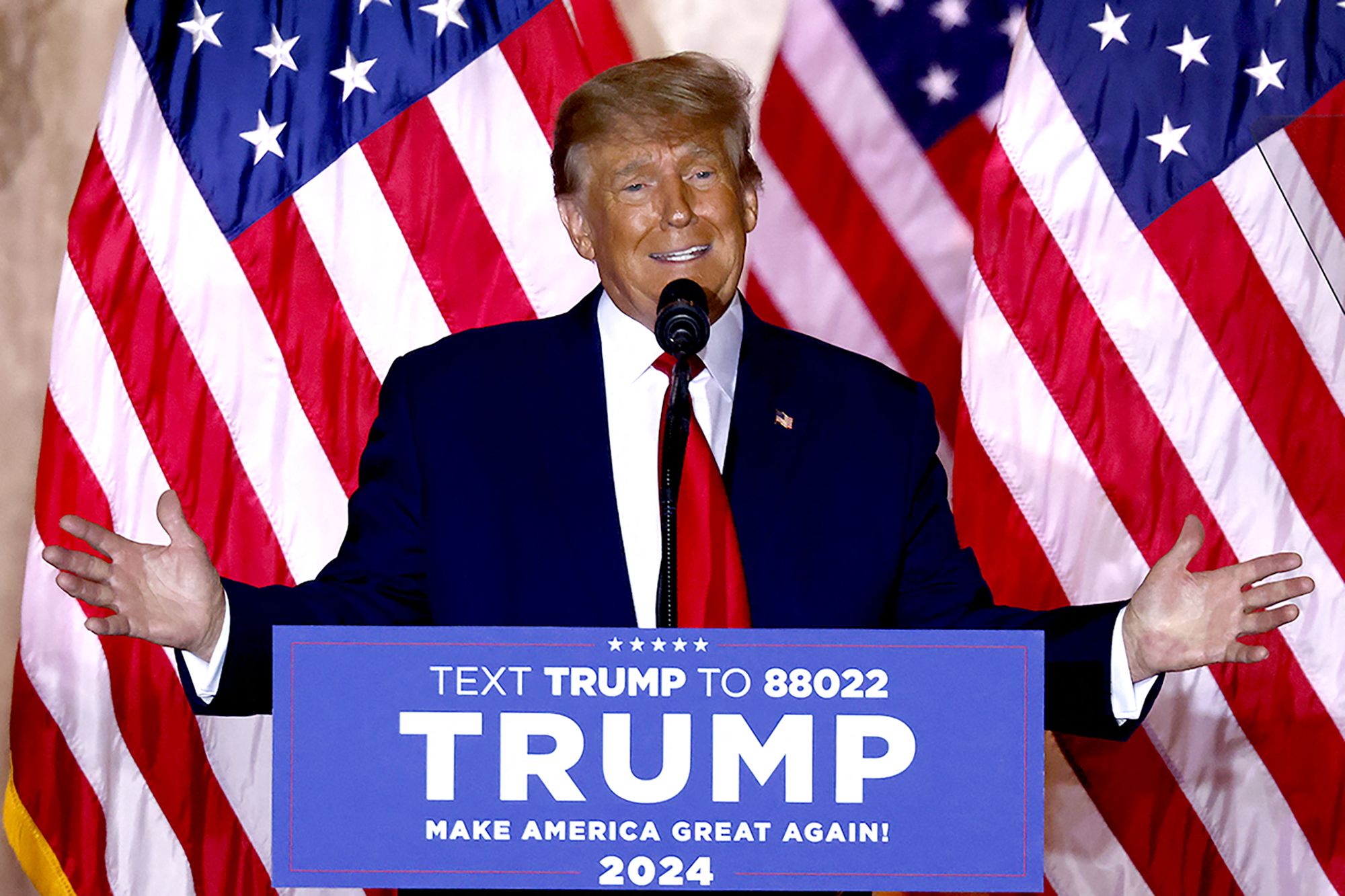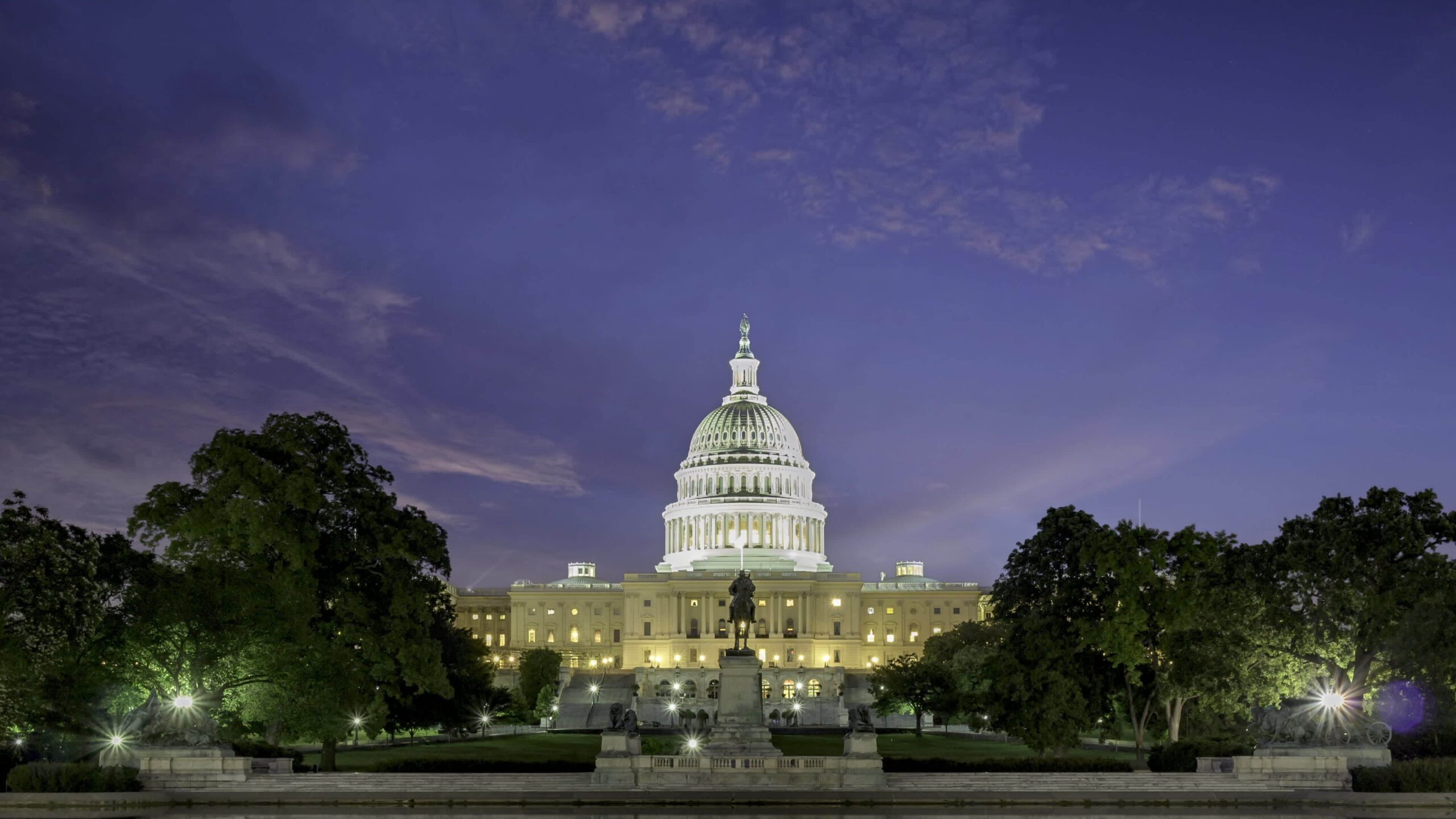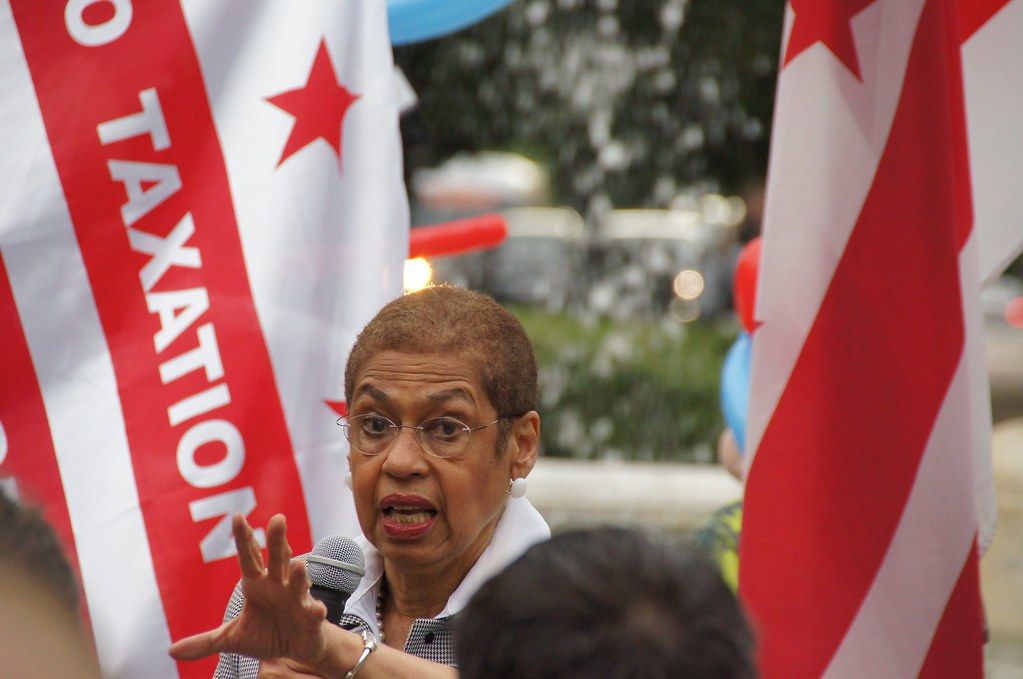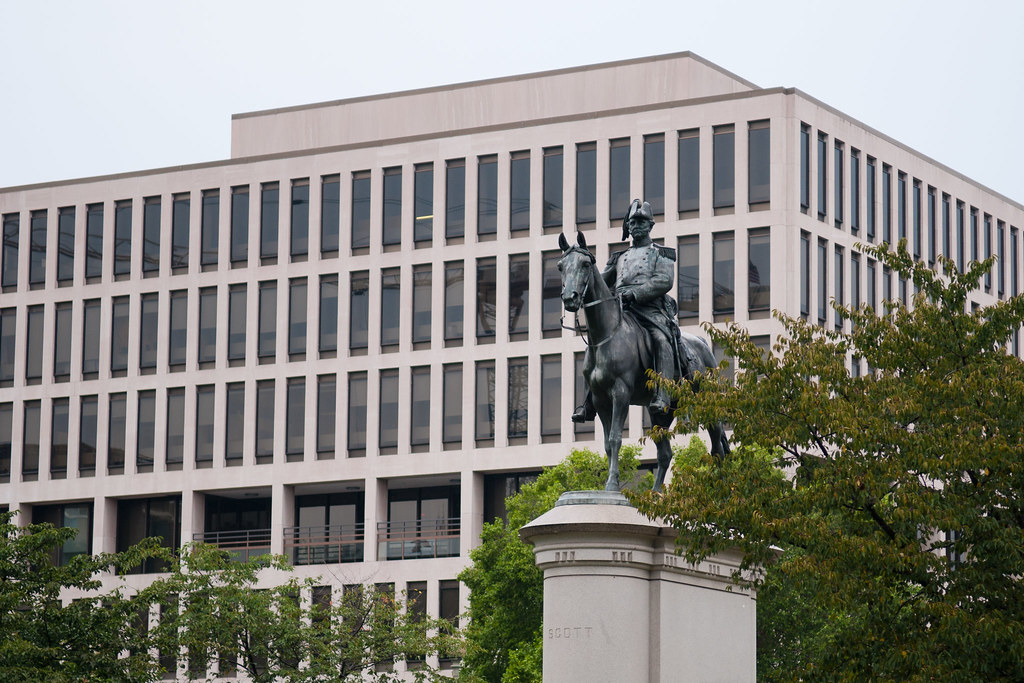
In a recent series of dramatic pronouncements, US President Donald Trump intensified his criticism of the security landscape in Washington, DC, asserting that the nation’s capital grapples with a homicide rate surpassing those of prominent Latin American capitals such as Bogotá, Mexico City, and Lima. His statements culminated in a striking announcement during a press conference on a Monday, where he declared his intention to place the Metropolitan Police Department “under direct federal control” and deploy 800 National Guard troops, all in an effort to “take back the city.” This move, he insisted, was part of a broader initiative to “liberate” Washington and “take back control” of cities he claimed were under threat from rampant violence.
President Trump’s words painted a stark picture, claiming, “The murder rate in Washington today is higher than that of Bogotá, Colombia; Mexico City, or some of the places that you hear about as being the worst places on Earth. It’s much higher.” He further underscored this perceived disparity by stating, “All is double or triple, so you want to live in places like that? I don’t think so,” referencing Washington’s alleged surpassing of Latin American cities like Brasilia, Panama City, and San José in homicide rates. This bold assertion, accompanied by visuals of charts purporting to validate his claims, set the stage for a contentious debate over urban crime statistics and governmental authority.
Local leadership, however, swiftly pushed back against this narrative and the proposed federal intervention. Washington Mayor Muriel Bowser characterized President Trump’s decision to federalize the Metropolitan Police Department and deploy the National Guard as “alarming and unprecedented.” While acknowledging that she was not entirely surprised by the announcement, she expressed deep concern, warning in a press conference that she would not “minimize the intrusion on the autonomy” of the city. Mayor Bowser was resolute in assuring residents that the local government continues to operate “in a way that makes citizens proud” and has since engaged with Attorney General Pam Bondi, who, under the executive order, would purportedly wield authority delegated by Trump to coordinate actions with the city. Crucially, the mayor also clarified that “nothing has changed” in the Metropolitan Police Department’s organizational chart, signaling resistance to an immediate federal takeover.

At the core of President Trump’s assertions lies a specific set of numbers. He based his statements on a graph corresponding to 2024, which displayed a homicide rate of 27.5 per 100,000 inhabitants in Washington. This figure, according to his interpretation, would position the capital above Bogotá, Colombia (15), Panama City, Panama (15), San José, Costa Rica (13), Mexico City, Mexico (10), Lima, Peru (7.7), and Brasilia, Brazil (6.8). Official statistics, reportedly obtained from organizations such as Mexico’s INEGI, the Public Prosecutor’s Office of Panama, and the government of Brasilia, appeared, at first glance, to confirm President Trump’s general statement: Washington had indeed surpassed several Latin American capitals in the murder rate per 100,000 inhabitants in recent years, though this metric represents only one of many crime rates.
Yet, a closer examination of the most recent official data reveals a more intricate and, frankly, encouraging picture that challenges the President’s alarmist rhetoric. According to an in-depth analysis by CNN journalist Daniel Dale, crime in Washington has seen a significant decline since a notable spike in 2023, a year that recorded 274 homicides, marking the highest number in more than two decades. This period of heightened concern, while serious, has since shifted.
Moving into 2024, the landscape of crime shifted dramatically as murders dropped to 187, a substantial reduction. Furthermore, data for 2025 indicates a continuing downward trend, showcasing the city’s progress in mitigating violent crime. Crime expert Jeff Asher, whose insights were cited by Dale, indicated that homicides in Washington fell by an impressive 34% compared with 2023 through July of this year. This significant decrease underscores a positive trajectory for the city’s safety. Additionally, the violent crime rate in 2024 was recorded as the second lowest since as far back as 1966, an astounding historical achievement that provides vital context to the ongoing discussion.
A preliminary analysis from the Washington Metropolitan Police Department (MPD) independently confirms this encouraging trend. The department’s data shows that overall crime has also decreased so far in 2025, aligning with a sustained decline observed in other major U.S. cities, including New York, Los Angeles, and Chicago. This broader pattern suggests that Washington D.C.’s efforts are part of a larger, positive national shift in urban crime rates, contrary to the narrative of spiraling chaos.
Despite this verifiable progress, President Trump continued to present a different reality to the public. He was quoted asserting, “We have DC: 41 per 100,000. No.1 that we can find anywhere in the world,” while dramatically brandishing a chart that supposedly compared homicide rates across various capital cities. It was later revealed that the chart displayed by Trump was initially shared on August 6 on Fox News’ “The Will Cain Show,” and crucially, the data presented within it was from 2023. This detail, conspicuously omitted by the President, is vital, as the district’s homicide rate has considerably fallen since that time. Moreover, even in 2023, the rate was demonstrably not the worst in the world; at least 49 other cities globally had higher homicide rates during that same period.
The accuracy of comparing Washington, D.C. to much larger international cities has also been called into question by experts. Crime data analyst Jeff Asher, for instance, emphasized that it is not particularly useful to compare international cities with populations in the millions to Washington, D.C., a city with approximately 700,000 residents. In his professional opinion, “A comparison to other large U.S. cities would be more appropriate.” This highlights a fundamental flaw in the President’s analytical approach, suggesting a selective use of data to bolster a particular narrative rather than provide an accurate depiction of the situation.

Further complicating direct comparisons, James Alan Fox, a criminology professor at Northeastern University, pointed out that Washington, D.C.’s homicide rate is influenced in part by the city’s unique limits. He explained that the city limits are “almost completely urban,” which differs significantly from other major U.S. cities such as Philadelphia and New York City, both of which “include suburban areas within city limits.” Crime rates are fundamentally calculated by dividing the number of crimes by the total population. Therefore, including a larger population base, particularly from suburban areas which tend to be safer, can effectively moderate overall crime rates. This structural difference means that a direct numerical comparison without this demographic context can be misleading, making D.C.’s rate appear artificially higher when juxtaposed with cities that benefit from a broader, less dense population base within their administrative boundaries.
So, what is Washington, D.C.’s most current homicide rate? In 2024, the most recent official data available, the district’s homicide rate stood at 27.3 per 100,000 people, as reported in a February analysis from the Rochester Institute of Technology. This represents a substantial drop from the district’s 2023 homicide rate of 39.4 per 100,000 people, further illustrating the ongoing improvement. The Department of Justice notably affirmed this positive trend in a January 3 press release, stating, “Violent crime for 2024 in the District of Columbia is down 35% from 2023 and is the lowest it has been in over 30 years,” a significant achievement that speaks volumes about the city’s commitment to public safety.

Detailed data from the Metropolitan Police Department of the District of Columbia further solidifies this positive narrative, showing a continued drop in homicides for 2025 year-to-date. As of August 2025, there were 99 homicides recorded, a notable decrease compared with 112 homicides during the same period in 2024. This sustained decline across multiple years and reporting agencies provides a robust, evidence-based counterpoint to claims of escalating danger.
Refuting the assertion that Washington, D.C.’s homicide rate is the highest of any city in the world, the chart Trump displayed showed the district’s 2023 homicide rate, but as already noted, it was not the highest that year. The Igarapé Institute, a respected Brazilian nonprofit organization that diligently monitors homicide rates globally, reported in its most recent 2023 data that an impressive 49 cities worldwide had higher homicide rates than Washington, D.C. Among these, three were indeed capital cities: Cape Town, South Africa; Kingston and St. Andrew, Jamaica; and Caracas, Venezuela. While it is true that D.C. had a higher 2023 homicide rate than Bogotá, Colombia, and Mexico City, as Trump specifically compared, it was far from the global apex.
Experts also highlight inherent limitations when comparing crime statistics across different countries. Professor Fox cautioned that “Crime data in some foreign cities is of questionable accuracy,” introducing a significant variable that can skew cross-national comparisons. He also pointed out that the U.S. generally exhibits high homicide rates compared with many other countries, attributing this largely to the “proliferation of guns” in the United States, a crucial factor that is often overlooked in such discussions and distinguishes the nature of violence in the U.S. from that in other nations.
It is also important to note that Washington, D.C.’s homicide rate isn’t even the highest within the U.S. itself. According to the February Rochester Institute of Technology report, the district ranks as having the fourth highest homicide rate in the U.S., placing it behind St. Louis, New Orleans, and Detroit. This internal U.S. comparison provides additional context, demonstrating that while D.C. faces its own challenges, it is not an outlier in the way suggested by President Trump’s sweeping claims.

Examining specific crime trends within Washington, D.C., the data reveals encouraging shifts. According to information released by the DC Metropolitan Police Department (MPD) on August 11, violent crime has notably decreased by 26% compared to the same period in 2024. This includes a significant reduction in total violent crimes from 2,138 in 2024 to 1,586 in 2025. Homicides, as previously mentioned, dropped from 112 to 99. Sex abuse crimes were halved, from 110 to 55, and assaults with a deadly weapon saw a decline from 667 to 534. Robberies also decreased substantially, from 1,249 to 898. This broad decline in violent incidents mirrors a national trend, with homicide rates across more than 100 major U.S. cities reportedly dropping more than 30% in 2025, according to data compiled by The Washington Post.
One of the most dramatic positive shifts has been in carjackings. While D.C. experienced an alarming surge in carjackings in 2023, with 140 incidents reported in June and another 121 in July of that year, the numbers have plummeted by 2025. The DC police carjacking database shows only 36 carjackings in June 2025 and a mere 16 in July 2025. This represents an approximate 80%+ decline from the peak two summers ago, a testament to focused law enforcement efforts and community initiatives.
Property crimes have also seen a slight reduction, reinforcing the overall positive trend in the city’s crime statistics. Total property crimes reported decreased from 14,734 in 2024 to 14,093 in 2025. Specifically, burglaries dropped from 543 to 437, and other thefts saw a reduction from 7,418 to 7,023. While motor vehicle thefts remained similar between 2024 (3,866) and 2025 (3,720), the overall picture is one of stabilization or reduction across key categories, moving in a favorable direction for residents and visitors alike.

Addressing the political rhetoric surrounding “out-of-control youth crime,” official data from Washington, D.C. presents a more nuanced reality. Juvenile arrests in the district are actually down nearly 20% compared to the same period last year. Of those arrests, only about 200 were for violent crimes, and just around 50 were specifically for carjackings, which were the subject of much public concern. In response to concerns, the city implemented a summer curfew for minors, with stricter enforcement in designated “curfew zones.” As of early August, police reports indicate no violations of these curfews, suggesting effective community and law enforcement strategies are in place.
President Trump’s declaration of a federal takeover on August 11 was rooted in a narrative of a “violent breakdown” in the capital. He extensively shared the footage of a 19-year-old tech worker, Edward Coristine, being beaten during an attempted carjacking, across his social media platforms. On Truth Social, he asserted, “It has become one of the most dangerous cities anywhere in the world. It will soon be one of the safest!!!” However, as the factual data and expert analyses consistently demonstrate, the picture of D.C. crime is far more complex and, in many key metrics, contrary to the President’s claims. Mayor Muriel Bowser aptly summarized the local leadership’s stance, stating in an MSNBC interview, “If the priority is to show force in an American city, we know he can do that here. But it won’t be because there’s a spike in crime.”
President Trump explicitly referenced Section 740 of the District of Columbia Home Rule Act as the legal basis for his unprecedented actions. This little-used authority theoretically allows the president to compel the mayor to make the services of the Metropolitan Police Department available to the federal government if “special conditions of an emergency nature exist.” This emergency control is statutorily limited to a maximum of 30 days unless Congress provides an authorization for an extension. Legal scholars quickly pointed out that such an invocation raises novel constitutional questions and complex issues pertaining to the city’s home-rule autonomy, initiating a potential legal and political showdown.

Critics from across the political spectrum swiftly denounced the move as politically motivated and likely to be counterproductive to actual crime reduction efforts. Representative Eleanor Holmes Norton, the nonvoting delegate who represents the District in Congress, characterized the President’s action as “a historic assault on D.C. home rule,” reflecting profound concern over the erosion of local governance. Local officials consistently highlight other signs of progress across the nation, noting that Los Angeles reported a more than 20 percent drop in homicides and was on pace for its lowest total in nearly six decades, while Oakland and other major U.S. cities also cited year-to-date decreases in violent crime. This broader context suggests that D.C.’s improvements are part of a larger, positive national trend rather than an isolated anomaly.
Amidst these developments, the Trump administration, via a White House fact sheet, sought to justify federal action by citing what it described as alarming statistics, including a district homicide rate exceeding 27 per 100,000 residents in 2024, arguing federal intervention was necessary to safeguard the capital. President Trump’s rhetoric extended beyond law enforcement, as he repeatedly denounced what he termed “filth and decay” in the capital and, in social media posts over a weekend, even urged the city’s homeless population to “move out, IMMEDIATELY,” with the vague promise of government-provided housing “but FAR from the capital.” These statements stirred considerable controversy, underscoring the multifaceted nature of the administration’s intervention strategy.
In essence, while the President’s declarations painted a picture of a city spiraling into unprecedented violence, the granular data tells a story of significant, ongoing improvement. The commitment of local leaders, coupled with the hard work of law enforcement, has demonstrably led to a substantial reduction in key crime indicators. While the challenges of urban crime remain a serious concern, particularly for those directly affected, it is imperative that public discourse is grounded in verifiable facts and comprehensive analysis rather than hyperbolic comparisons or outdated statistics. The dialogue around Washington, D.C.’s safety must move beyond political theater and embrace the nuanced reality of a city actively working to enhance the well-being and security of all its residents.

The real strength of a community, and indeed a nation, lies not in exaggerated claims of decline but in the clear-eyed assessment of challenges and the celebration of tangible progress. As Washington, D.C. continues its journey towards greater safety and stability, it is the consistent, data-driven efforts of its residents and local authorities that will truly define its future, far more than any fleeting political pronouncement. Understanding the true trajectory of crime in the nation’s capital requires a diligent look at the numbers, respecting the complexity of urban dynamics, and acknowledging the continuous strides being made, rather than relying on narratives that contradict the evidence.



